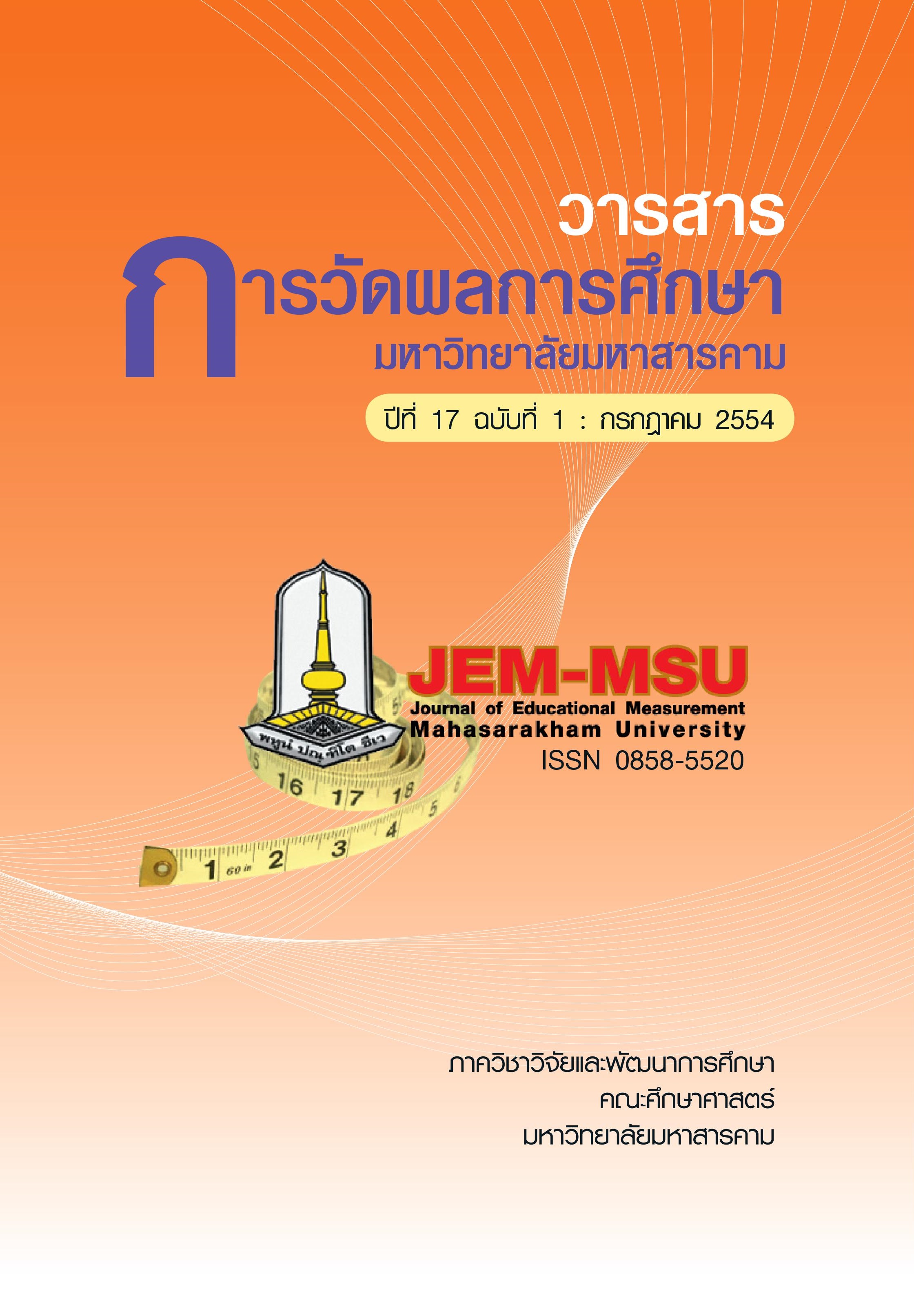Factor Analysis to Develop Indicators to Promote Science Process Skill of Second- Class Interval Students of Udon Thani Educational Service Area Offce Area 4
Main Article Content
Abstract
Encouraging students in science process skill is to help students to learn science
effectively. Because the scientifc process skills include basic skills and advanced skills
which can be used to beneft in everyday life. It allows students who have acted and
are eager to learn science process skills more. Therefore, this research aims to develop
indicators to promote science process skills for 1,123 students in second level of Udon Thani
Educational Service Area Offce Area 4 in academic year 2009. Derived by multi-stage random
sampling of closed and query analysis component to promote science process skills. The data
analyzing using statistical analysis and element analysis survey by using Lisrel 8.72 ; a statistical
analysis program and component verifcation.
The result showed that the second component verifcation has positive value from
0.86, 0.99 in13 indicator’s weight of the composition to promote science process skills.
And statistically signifcant is at the .01 level for all. The factor loading values were sorted from
most to least as follows; in achievement motivation = 0.99, the measurement and evaluation
= 0.99, participation in the study = 0.96, reinforcement of the executive = 0.96, supporting
from parents = 0.96, interaction in the classroom = 0.95, eager to learn the behavior = 0.94,
preparation of teaching = 0.93, behavior of students teachers parents and administrators =
0.91, concentration of teachers and parents= 0.90, attention of teachers and parents = 0.89,
qualifcations of students = 0.86 and qualifcations of teachers = 0.86. The values were sorted
respectively. Each indicator changed in conjunction with the elements of promotion of
level students of Udon Thani Educational Service Area Offce Area 4 showed that the most
important element were in achievement motivation and the measurement and evaluation.
The least was qualifcation of teachers. Index level of harmony between models with
empirical data has Chi–square value=1266.17; p=0.65 at degrees of freedom (df) 1286, GFI
value=1.00, AGFI value=0.89, SRMR value=0.034 and RMSEA value = 0.00 . The model was
direct linear structure.
The conclusion is that analysis of factors that promote science process skills of the
second level students of Udon Thani Educational Service Area Offce Area 4 was from students
directly and the indicators could be applied to use in persons involved in learning to promote
encouraging students’ science process skills.
Article Details
The content and information contained in the published article in the Journal of Educational Measurement Mahasarakham University represent the opinions and responsibilities of the authors directly. The editorial board of the journal is not necessarily in agreement with or responsible for any of the content.
The articles, data, content, images, etc. that have been published in the Journal of Educational Measurement Mahasarakham University are copyrighted by the journal. If any individual or organization wishes to reproduce or perform any actions involving the entirety or any part of the content, they must obtain written permission from the Journal of Educational Measurement Mahasarakham University.


